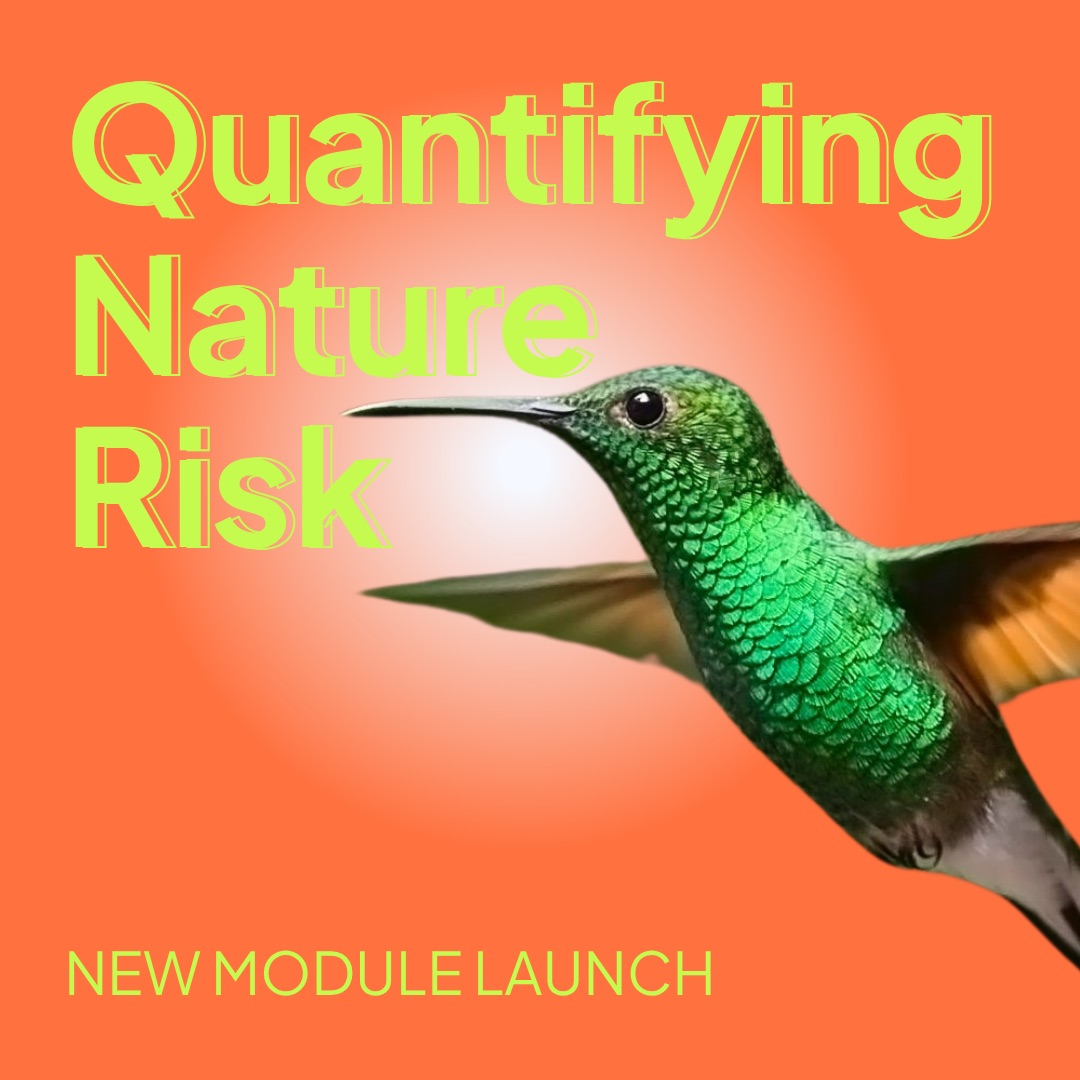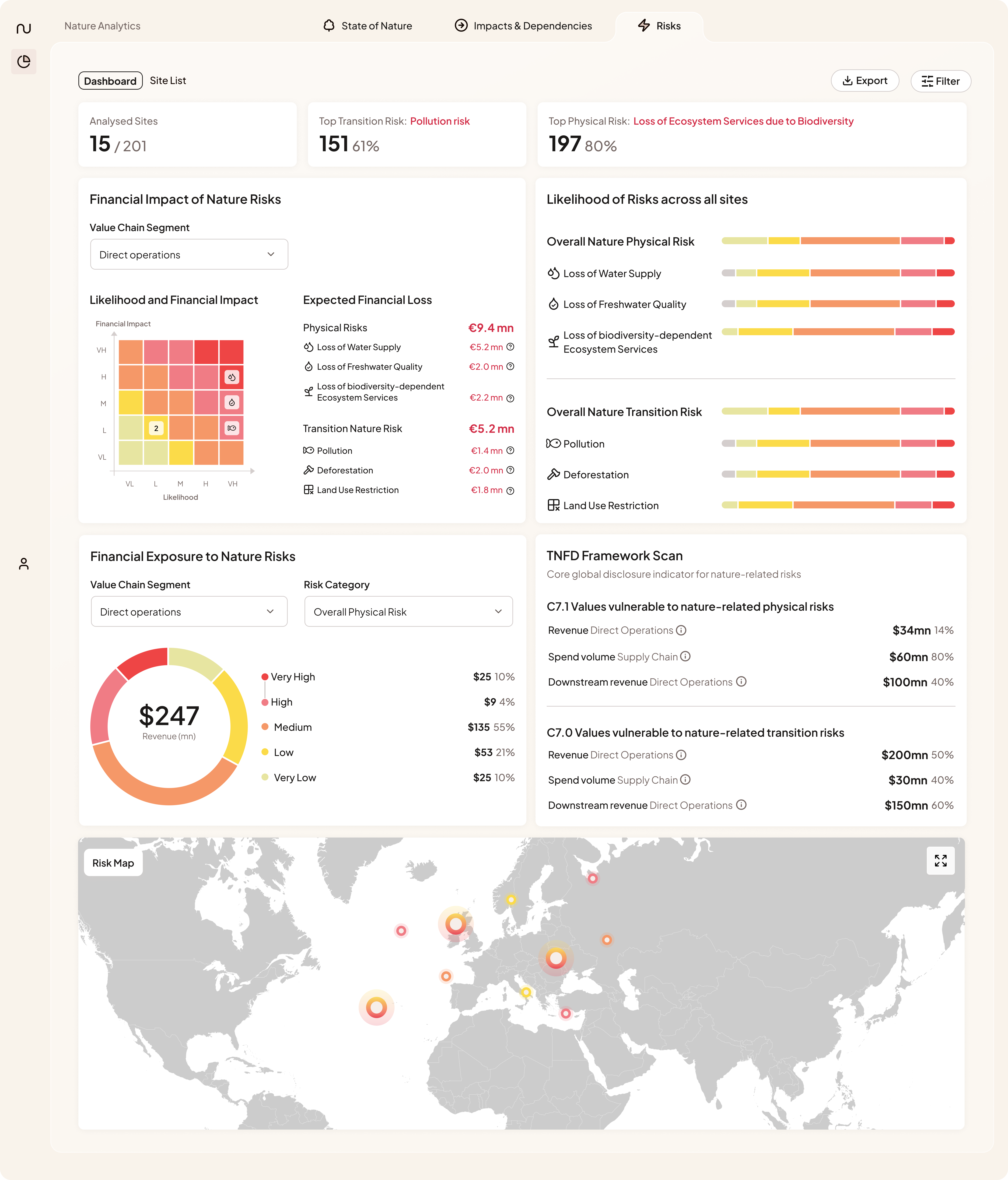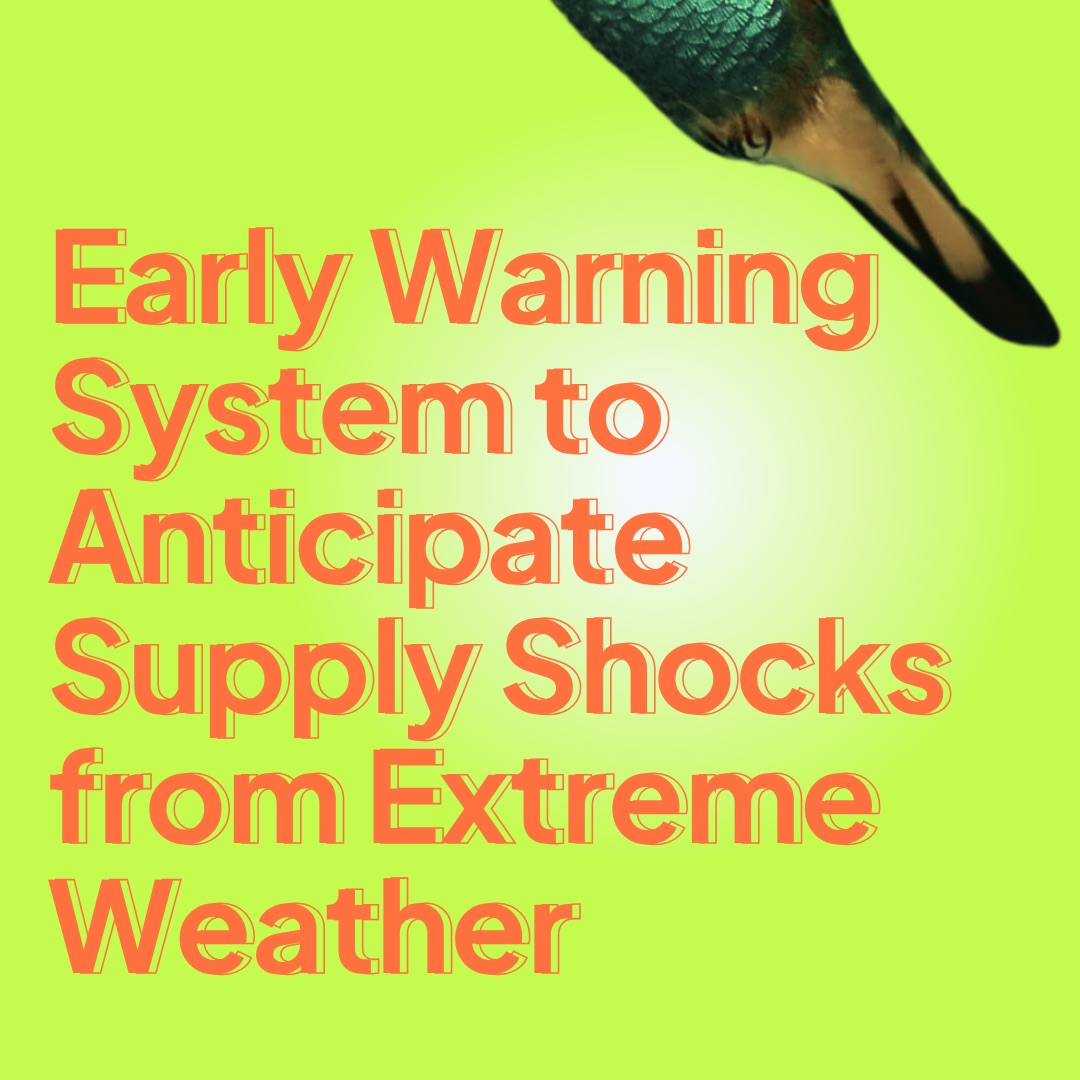
Click HERE to watch a demo video with our co-founder & Chief Product Officer Nico
To build resilience against nature risks - physical & transition - and embed their consideration across a business, companies require a rigorous way to quantify the financial value at stake (Q: What % of my revenue is at risk due to water scarcity and in which geographies?). Our recently launched Risk module picks up right here by:
1) Quantifying financial value at risk per location
2) Covering both physical nature risks (e.g. water availability, ecosystem function) and transition risks (e.g. deforestation liability, increased land protection)
... while aligning with CSRD, TNFD, & SBTN standards.
Our Risk module complements our State of Nature and Impacts & Dependencies modules, bridging the gap between local ecosystem condition (TNFD LEAP Step 1), impact & dependency analysis (Step 2), and quantification of financial risk (Step 3):

Why does it matter?
Let’s say you are a Sustainability Manager. You'll need to:
1) Detect nature risks to prevent supply shortfalls
Building resilient supply chains starts with knowing where you’re most exposed.
Take one supplier - for example, a steel plant or a rubber producer for tires. With Nala’s Risk Module, you can identify the specific nature risks, quantify their financial impact on revenue per site or on supplier spend data, and anticipate potential penalties - then act early.
Two examples very prominent for these types of suppliers could be:
💧 Water Scarcity: Steel plants rely on massive water volumes for cooling. In drought-prone regions, restricted access can disrupt production, leading to increased input costs and lost revenue. Insights help you engage suppliers on water efficiency or diversify sourcing to less water-stressed regions.
🌱 Soil & Land Degradation: Natural rubber plantations face deforestation and soil erosion risks. Supply shortages or import restrictions can raise raw material costs & trigger regulatory penalties, directly impacting tire supplier spend. Data helps you promote regenerative practices, support restoration, or shift to lower-risk materials.
2) Report in line with CSRD disclosures
Under ESRS E4, you are tasked to identify sites with material impacts, risks, or opportunities (IROs; based on latest ESRS E4 Draft, July 2025) - a process that’s both complex and time-consuming. Our new module works seamlessly with our existing CSRD & TNFD Framework Scan to automate site-level assessments across the entire value chain and pinpoint material sites.
Get in touch if you’d like to learn more!


.jpeg)


